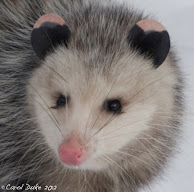Fritillaries fritter away their days sipping nectar and flitting about the gardens.
Not a bad life . . . as long as they can escape beaks of birds and other predators.
Echinacea is a favored flower for these Aphrodite Fritillary Speyeria aphrodite, 'NOT' butterflies.
Throughout my blog, I have wrongly identified these butterflies. Thanks to Randy I finally get it!
It is so funny how something can stare us in the face and we just never see it.
Each of these composites is of a different butterfly on a different day. Three July days . . Four Great Spangled Speyeria cybele, butterflies . . . many frames.
Fritillaries busy themselves placing their probosces in tiny florets between the flaming darts of coneflowers and are not bothered by my coming in rather closely. They are in constant motion, however, making it difficult to clearly capture them.
The Great Spangled Fritillary has one brood . . . in flight from the end of June through the first week of September. They overwinter as first instars . . . tiny caterpillars who never have known the taste of violets, for they have not taken a bite before hybernating.
I do get dizzy trying to identify Fritillaries.
Fritillaries are listed under the Family Nymphalidae or Brushfoots along with all the Milkweed butterflies, Admirals, Emperors, Satyrs and Wood Nymphs to name but a few. The Subfamily is Heliconiinae or Longwings. There are even different classifications for Aphrodite and the Great Spangled Fritillary butterflies. It is fun to sort them all out according to families too . . . but I go cross-eyed trying to identify and remember it all.
 |
| Fresh Female? Wings |
These two Great Spangled Fritillary butterflies share nearly the same patterns. The fresher one above dons white edges . . . perhaps the more faded butterfly below had them earlier on? The brighter ovals above the white edges are more pronounced in the fresher butterfly too. The entire abdomen in the butterfly below is thinner and has less hair. Could this be a male and female? Or are they two different kinds of Fritillaries?
 |
| Older Male Wings ? ~ A repeat of the third photo from top. |
Sadly I read that tiger patterned Aphrodite Fritillaries are less common these days. Perhaps due to climate change. Great Spangled Fritillaries are much more common now in Massachusetts. Most all Fritillaries here in New England prefer violets as a host plant. Rabbits are so numerous here that I fear for their survival in my gardens.
There are more Fritillaries to come . . . today the butterflies and skies are in the pink.
Our winter continues to be milder than most I can recall. Sunrises are simply stunning.
Light stretches and lengthens our days.
May your romance always flutter.
May your love always give you butterflies.
Happy Valentine's Day Dear Readers!




































































































































